
Why Name a Spacecraft Cassini?
Or a Probe Huygens?
------------------------------------------------------------------------
How do you go about naming a spacecraft?
Simple!
You think about what it is going to do, and then use your imagination!
For example, the first pair of spacecraft to ever fly beyond Mars were sent just to see if we could make it to Jupiter and Saturn. NASA engineers and scientists were reminded of the risky journeys of the early American settlers of the Old West, and called the two probes PIONEER.
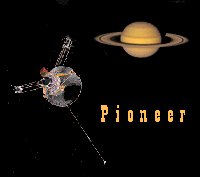
After Pioneer, two more spacecraft went planet hopping, each visiting several of the outer planets. One went to all four gas giants: Jupiter, Saturn, Uranus, and Neptune! They traveled to many different "ports," and beyond! So NASA called them VOYAGER.
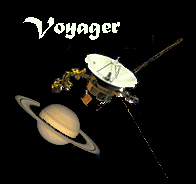
Then in the 1980s, a new kind of mission was planned. One spacecraft would fly out to Jupiter, but not pass it like the others. It would orbit it, and fly past the four big moons, Io, Europa, Ganymede, and Callisto, again and again. The first person to ever see Jupiter's moons was Galileo Galilei, an Italian astronomer. What better name for this spacecraft than GALILEO!
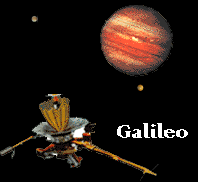
So what do you name a spacecraft
That will fly out to Saturn
And orbit its huge rings
Making observations of its many moons?
You could probably start by asking,
Which astronomers first looked closely at Saturn?
In the early 1600s, Galileo saw Saturn through his homemade telescopes, but he didn't know what its rings were. At one point he thought Saturn had ears!
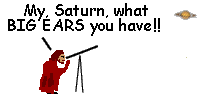
Galileo decided that Saturn must have two large moons, one on each side, that didn't orbit Saturn but somehow just stayed stuck to the planet's sides. But a few years later, he didn't see anything around Saturn. Galileo didn't know what to think then!
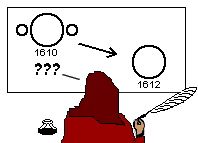
No one could understand the strange shapes on either side of Saturn, which every 14 years or so would completely disappear! Then a Dutch astronomer named Christiaan Huygens (pronounced HOY ginz) made better telescopes with his brother. Through them, Huygens figured out that Saturn must have a detached, wide, thin ring!
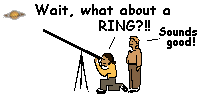
Huygens drew this diagram to explain how Saturn could change its shape, because of its ring.

Jean Dominique Cassini, an Italian astronomer living in France, also studied Saturn. He watched the planet so much that he noticed a space inside the ring. There was more than one ring - there were TWO rings, he declared. This "gap" between the two main rings is still called the Cassini Division.
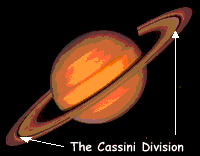
Cassini also guessed that the rings were really swarms of little moonlets, too small to be seen individually - and he was right! Now we know there are many rings, all composed of tiny particles and even some small moons.
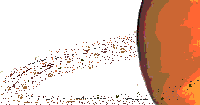
Cassini the man
realized the true nature of Saturn's rings, so perhaps
a spacecraft named Cassini
can uncover even more of the truth
about Saturn and all those rings!
Both Huygens and Cassini built bigger and more powerful telescopes to find out more and more about Saturn.

Huygens discovered its largest moon, Titan, which we now know has an atmosphere. Spacecraft Cassini carries a probe which will dive into Titan's atmosphere and send back the first photographs of Titan's surface. The probe's name? Huygens!
Cassini discovered a new moon around Saturn almost every time he used a longer telescope to look at the planet. At one point, he had a water tower moved to the Paris Observatory, just to support a really long telescope!
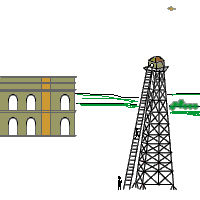
Cassini was the first to see the moons later named Iapetus, Rhea, Tethys, and Dione. In those days, some people believed that if you had a really long, powerful telescope, you could even see animals on our moon!

What if Cassini and Huygens sometimes daydreamed about how wonderful it would be, not to have to use a telescope to see beautiful Saturn? If only they could fly there, and see it all close up! The huge rings, the moons, the golden planet itself!
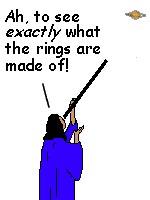
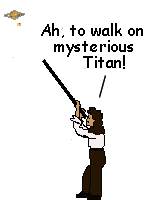
If they did dream of that, those dreams are coming true!
Cassini will fly through Saturn's rings, and
Huygens will land on Titan!
What would they think of that?!?